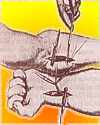
On 16 Oct 1914, the first blood transfusion of World War I was performed on a wounded soldier when Isidore Colas gave his blood to Corporal Henri Legrain of 45th Infantry Corps of the French Army. More blood transfusions on casualties followed, though though not all were successful. The importance of matching blood types had only begun to be appreciated (1907), as the ABO blood types had been discovered only as recently as 1901 by Dr Karl Landsteiner. The possibility of blood transfusion had been known for more than a century. Dr James Blundell had established in 1818 that only human blood could be donated to another human, and he had invented a suitable instrument.
At first, only direct blood transfusion on the battlefield was possible by direct human-to-human methods, and limited by the supply of donors. That began to change when the Belgian Adolph Hustin discovered (1914) how sodium citrate could anticoagulate blood for transfusion. It led to the ability to store supply of blood, which helped surgeons cope with the high numbers of war casulties.
Although World War I was a significant stimulus for advances in blood transfusion techniques, there was significant progress being made in the years before the war started. In 'Blood Transfusion Often Successful,' a brief article from the New York Times in 1912, such optimism was expressed for the donor-to-patient transfer of blood by tube that the subtitle was 'Patients Almost Literally Raised from the Dead.' Clotting was at that time recognised as a problem to be overcome.
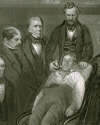
On 16 Oct 1846, remembered as “Ether Day,” American dentist Dr William T.G. Morton, first publicly demonstrated ether anesthetic during a hospital operation. Today's book pick is: , by who tells the unpredictable story of America's first major medical discovery, the use of anesthesia. This absorbing narrative traces the dawn of modern surgery through the lives of three extraordinary men. Before the use of anesthesia, patients undergoing surgery saw, heard, and felt every cut the surgeon made. Shudder at the thought of it! Because we are now spared this grim and grisly operating room experience, in gratitude, you may wish to learn more about the history of anesthesia by reading this book.
It is available from Amazon, typically about (As of earlier time of writing - subject to change.)
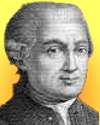 | I have always loved to begin with the facts, to observe them, to walk in the light of experiment and demonstrate as much as possible, and to discuss the results. |
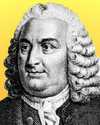 | The ovary of an ancestress will contain not only her daughter, but also her granddaughter, her great-grand-daughter, and her great-great-granddaughter, and if it is once proved that an ovary can contain many generations, there is no absurdity in saying that it contains them all. |
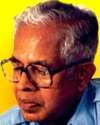 | Scientists are human—they're as biased as any other group. But they do have one great advantage in that science is a self-correcting process. |
| Before you look at today's web page, see if you can answer some of these questions about the events that happened on this day. Some of the names are very familiar. Others will likely stump you. Tickle your curiosity with these questions, then check your answers on today's web page. | |
| Births | |
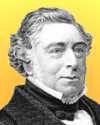 | An outstanding English Victorian, born 16 Oct 1803, was a civil engineer and builder of many long-span railroad bridges. He took over as manager of his father's company that built bridges, but also locomotives including the famous Rocket (1829) built by his father. Can you name this man? |
 | Cyril Ponnamperuma, born 16 Oct 1923, was a chemist, exobiologist and a leading authority on the chemical origins of life. He built on the work of Miller and Clayton Urey studying chemical reactions in “primordial soup” experiments. What is exobiology? |
| Deaths | |
 | Jon Postel (1943-1998) was an American computer scientist who played a pivotal role in creating and administering the Internet. In the late 1960s, he was a graduate student developing the forerunner of the Internet for use by the U.S. Dept. of Defense. He also created the Internet's address system. Can you name the forerunner of the Internet? |
| Events | |
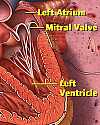 | On 16 Oct of a certain year, the first motion picture in the U.S. of the inside of a living heart was shown at the clinical session of the New York Academy of Medicine Post Graduate Fortnightly held at Montefiore Hospital, New York City, where the film was made. A dog's heart was the subject of the 9½ minute colour film, which showed the opening and closing of the mitral valve. In what decade was this event? |
 | On 16 Oct 1846, American dentist, Dr William T.G. Morton made the first public demonstration of the administration of ether anesthetic, during an operation performed by Dr. John Collins Warren at the Massachusetts General Hospital in Boston. The patient, Gilbert Abbott, age 20, had a small superficial tumor removed from beneath the left lower jaw. How was this new anesthetic administered? |
Fast answers for the previous newsletter for October 15: Evangelista Torricelli • Phobos and Deimos • bromine • Monera and Protista • Brazil • General Electric.
 If you enjoy this newsletter, the website, or wish to offer encouragement or ideas, please send feedback by using your mail reader Reply button.
If you enjoy this newsletter, the website, or wish to offer encouragement or ideas, please send feedback by using your mail reader Reply button. Your click on a Facebook, StumbleUpon, or other social button on the site webpages is also a welcome sign of appreciation. Thank you for using them.
© This newsletter is copyright 2020 by todayinsci.com. Please respect the Webmaster's wishes and do not put copies online of the Newsletter — or any Today in Science History webpage. (If you already have done so, please remove them. Thank you.) Offline use in education is encouraged such as a printout on a bulletin board, or projected for classroom viewing. Online, descriptive links to our pages are welcomed, as these will provide a reader with the most recent revisions, additions and/or corrections of a webpage. For any other copyright questions, please contact the Webmaster by using your mail reader Reply button.
--
If you do not want to receive any more newsletters, Unsubscribe
To update your preferences and to unsubscribe visit this link
Executive Real Estate Business Class
-
"It was like a man with wings. It wasn't like anything you'd see on TV or in a monster movie." ...
About the publisher
Search This Blog
Blog Archive
-
▼
2020
(1542)
-
▼
October
(171)
- The Compass: Iceland
- A Very Special Halloween Edition Of Our Scariest S...
- On This Day for October 31 - Luther's Ninety-five ...
- Newsletter for Saturday 31 October.
- CORONAVIRUS UPDATE: Why some people are supersprea...
- October 31: Martin Luther Challenges the Pope, Mic...
- PHOTOGRAPHY: Capturing America's pent-up energy to...
- The Terrifying Story Of The Mothman, The Little-Kn...
- The Roundup Top Ten from History News Network
- On This Day for October 30 - Henry Tudor crowned k...
- Newsletter for Friday 30 October.
- October 30: Tsar Nicholas II 'October Manifesto', ...
- ANIMALS: Will oil drilling spread across spectacul...
- On This Day for October 29 - Collapse of U.S. stoc...
- Newsletter for Thursday 29 October.
- October 29: End of China's One-Child Policy and Lo...
- YOUR WEEKLY ESCAPE: The science of the heebie-jeebies
- SCIENCE: Will every hurricane season be like this?
- The Latest News from History News Network
- On This Day for October 28 - Statue of Liberty ded...
- Newsletter for Wednesday 28 October.
- October 28: Fingerprints, Prohibition and the Blac...
- TRAVEL: When do Americans say they’ll fly again?
- Were vampire hunters real? Subscribe to find out.
- On This Day for October 27 - Anwar Sadat and Menac...
- Newsletter for Tuesday 27 October.
- October 27: China's Population Reaches 1 Billion a...
- HISTORY: Rush of early voters spurs talk of a record
- New This Week on History News Network
- On This Day for October 26 - Park Chung Hee assass...
- Newsletter for Monday 26 October.
- October 26: Beginning of the Red Cross and the Gun...
- FAMILY: When the best advice to your kids isn't yours
- On This Day for October 25 - English triumph at Ag...
- Newsletter for Sunday 25 October.
- October 25: The Great United Nations China Switch ...
- The Compass: Japan
- On This Day for October 24 - United Nations establ...
- Newsletter for Saturday 24 October.
- October 24: Two Great Historical Stock Market Crashes
- CORONAVIRUS UPDATE: How to fight the COVID-19 'inf...
- PHOTOGRAPHY: The best photojournalism of the decade
- What did Cleopatra look like? | Charles and Diana’...
- 11 Spooky Urban Legends Based On Terrifying True S...
- The Roundup Top Ten for October 23, 2020
- On This Day for October 23 - U.S. and French troop...
- Newsletter for Friday 23 October.
- October 23: US National Debt, an Old Fossil and th...
- ANIMALS: They were researching cheetahs. Iran call...
- Love the show Weird But True? Get more WBT with ev...
- Early Holiday Savings at the HISTORY Store
- Introducing the Britannica All New Kids' Encyclope...
- On This Day for October 22 - Cuban missile crisis,...
- Newsletter for Thursday 22 October.
- YOUR WEEKLY ESCAPE: These prehistoric footprints t...
- October 22: Greenwich Mean Time, the Cuban Missile...
- SCIENCE: Will the next generation fight a pandemic...
- On This Day for October 21 - Magellan's discovery ...
- The Latest News from History News Network
- October 21: Battle of Trafalgar, China Occupies Ti...
- TRAVEL: We found 50 stories in 50 states for ‘Amer...
- On This Day for October 20 - Opening of Sydney Ope...
- Newsletter for Tuesday 20 October.
- October 20: On This Day in History
- HISTORY: Why do we have the Electoral College?
- Join photographer Pete Muller for an online conver...
- New This Week on History News Network
- On This Day for October 19 - Surrender of Lord Cor...
- Newsletter for Monday 19 October.
- October 19: On This Day in History
- FAMILY: Letting kids take charge
- The lost heirs of Henry VIII
- On This Day for October 18 - Alaska Purchase appro...
- Newsletter for Sunday 18 October.
- October 18: French Protestants, The Alaska Purchas...
- The Compass: Portugal
- On This Day for October 17 - Mother Teresa awarded...
- Newsletter for Saturday 17 October.
- October 17: Burma Railway, OPEC Oil Embargo and Ra...
- CORONAVIRUS UPDATE: Who will be first in line for ...
- PHOTOGRAPHY: How COVID-19 changed our work
- The 25 Best Horror Movies Of All Time — And The Ch...
- This Week's Roundup Top Ten from History News Network
- On This Day for October 16 - Marie-Antoinette guil...
- Newsletter for Friday 16 October.
- October 16: Battle of Leipzig, Mao's Long March an...
- ANIMALS: The wildlife photo of the year
- Challenge grant: Help unlock important funds for w...
- On This Day for October 15 - Final conference on A...
- Newsletter for Thursday 15 October.
- October 15: Napoleon's Exile, the 1st Oral Contrac...
- YOUR WEEKLY ESCAPE: A murder mystery 430,000 years...
- SCIENCE: Will the next generation fight a pandemic...
- The Latest News on History News Network
- On This Day for October 14 - Battle of Hastings, D...
- Newsletter for Wednesday 14 October.
- Historic Trends in our time may be overcome with g...
- October 14: William the Conqueror, Robert the Bruc...
- The Embarrassing Final Moments Of 10 Revered Histo...
- TRAVEL: Does your wine taste like fire?
-
▼
October
(171)
-
Blogroll
-
About
HistoryFact










0 comments:
Post a Comment